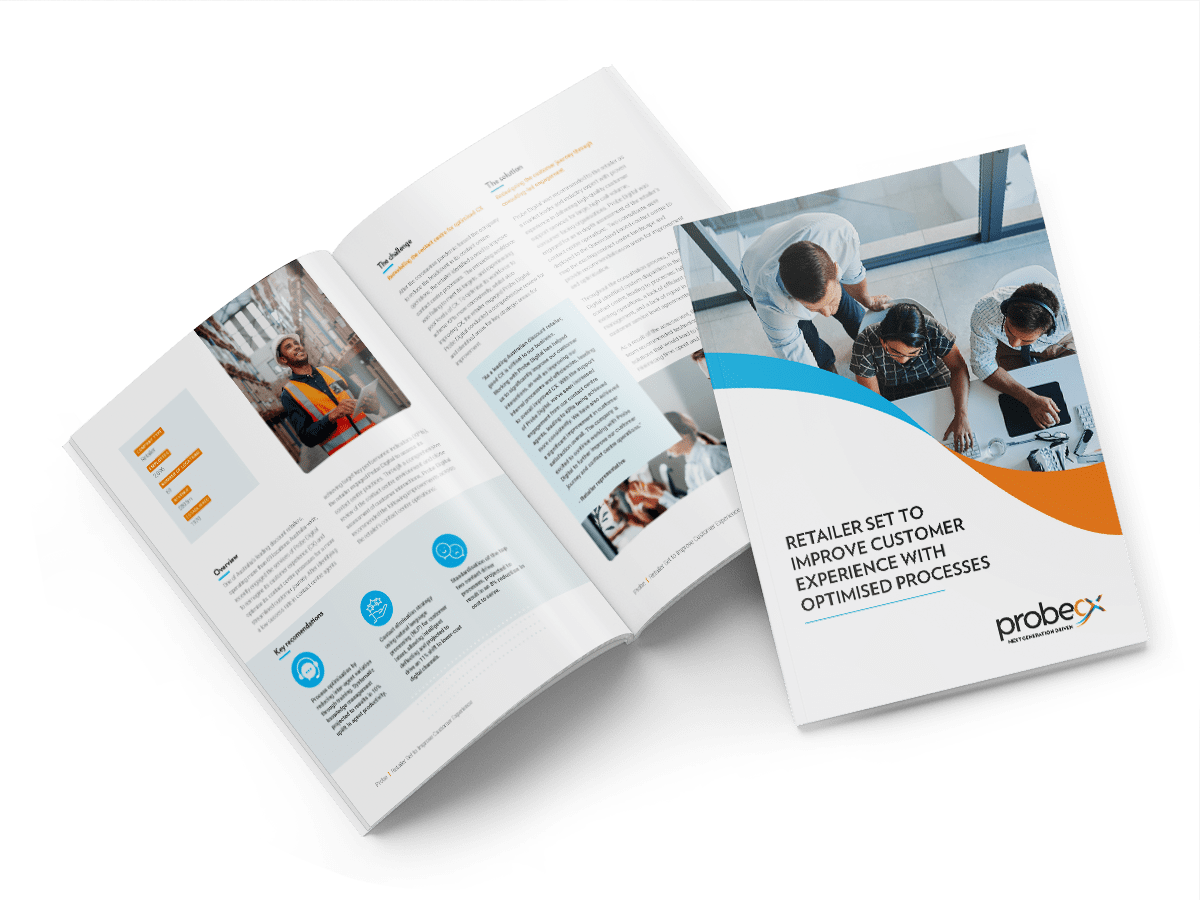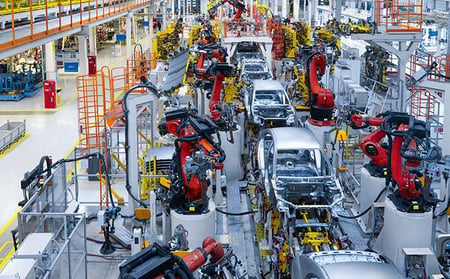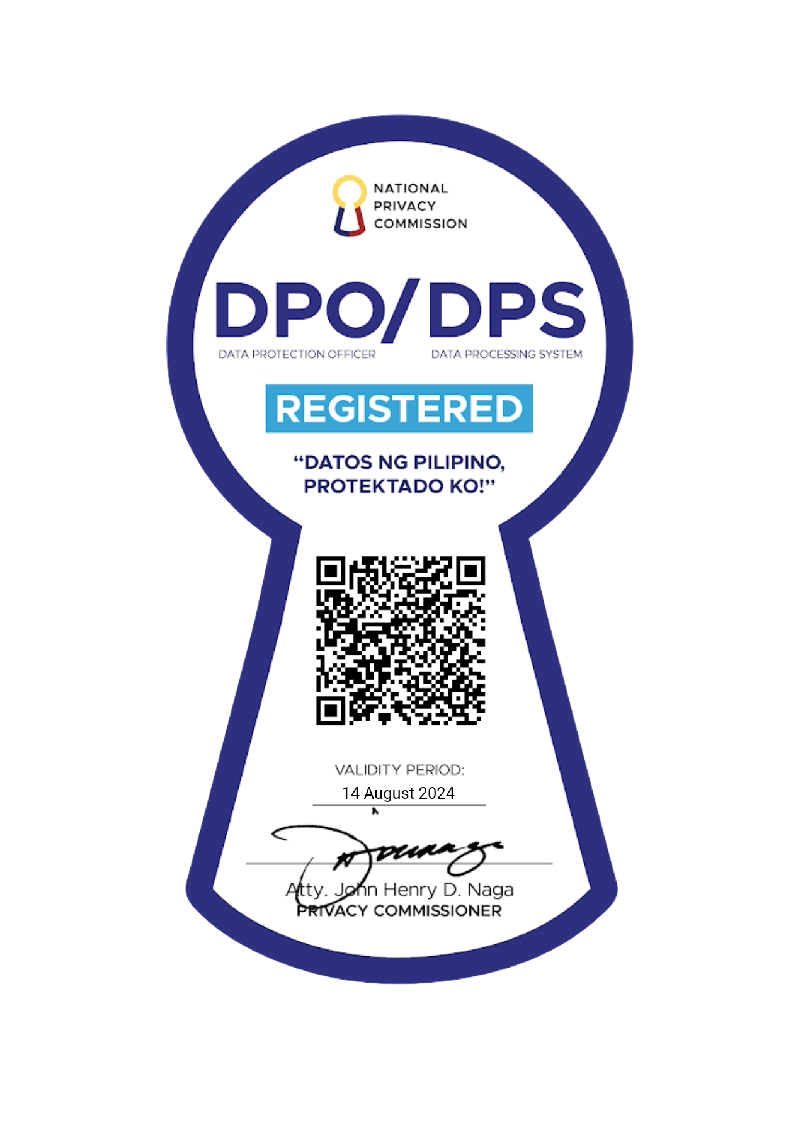-
About Us
Probe CX is a tech-powered, global customer experience organisation that amplifies human capabilities with technological excellence.
-
Vision and Culture
We help our clients become modern digital organisations by combining the latest technology with people, process and data.
-
Executive Team
Meet the team with unmatched experience committed to helping organisations create environments for digitally-enabled CX to thrive.
-
Compliance
Industry-recognised certifications to protect what matters most to our clients and their customers.
-
Locations
Over 19,000 team members delivering exceptional customer experiences across five countries.
-
Reasons to choose Probe CX
The top nine reasons to get more closely acquainted with Probe CX.
TECHNOLOGY & TRANSFORMATION SERVICES
 Creating exceptional customer experiences by 'doing it better'
Creating exceptional customer experiences by 'doing it better'
Optimise your customer experience by designing, deploying and managing digital solutions customised to your unique needs.
Continue reading- Blog
- What is hyper-personalisation?
What is hyper-personalisation?

The internet age has now created the ability for businesses to take the personal touch to the next level. Personalisation has been a marketing buzzword for years, with companies investing in email marketing strategies from the late 1990s and ramping up their efforts in more recent times with website personalisation that saw content tailored to meet the individual needs of every visitor.
Now, as technology that was once the stuff of fiction not only becomes reality but the norm, businesses are rushing to embrace a concept that is supercharging the art of customer service – hyper personalisation.
What is Hyper Personalisation?
Hyper personalisation leverages artificial intelligence (AI), machine learning and real-time data to deliver more relevant content, product and service information to each user and ultimately personalise their entire experience. The vast majority of customers have not only come to accept that algorithms can tap into their online habits but now expect brands to tune into their specific needs.
Looking at the success of global leaders such as Amazon, Netflix and Spotify, it is evident today’s customers are attracted to organisations that can identify them, track their every interaction on every channel and understand and know how to solve their issues based on captured data. It is all about meeting customers where they want to be online and putting them in control of their consumer journeys. Using customer data to deliver a hyper personal experience is more than just a good business idea – it is absolutely essential in the modern world.
Benefits of Hyper Personalisation
While some executives will need to look no further than studies that show 75% of customers are more likely to purchase from organisations that offer personalised services based on their individual preferences, there are several specific reasons that customers and businesses alike are embracing hyper personalisation.
Simpler Shopping
By giving customers more of what interests them, hyper personalisation is allowing them to enjoy an uncluttered and simplified shopping experience. Less obstacles means less effort, which means more sales. It also negates the issue of ‘choice overload’ where customers feel burdened by the huge number of options being thrown at them. By only providing products and services they need, shoppers are less likely to head to a competitor’s site in search of a simpler process.
More Knowledge
The ability to accurately target offerings to individual customers on the ‘shop floor’ is a blessing but so too are the incredible insights that real-time data can provide to businesses about their customer bases.
Smarter Selling
While it can be frustrating for people to receive unsolicited sales calls when they’re simply not interested in a product or service, don’t forget to spare a thought for the sales staff making the calls. Hyper personalisation takes the guesswork and time-wasting out of who might be interested by identifying those customers that would most appreciate an approach.
Trust Exercise
The long-term benefits of giving your customers and online visitors exactly what they want when they want it cannot be understated. By tapping into their consumer DNA, you align your respective interests, build trust and, most importantly, establish a foundation for ongoing sales.
More Than Customer Profiling
While many businesses identify and offer services based on customer traits, this should not be confused with hyper personalisation. Customer profiling is a great first step to a personalisation strategy but it does not go to the next level of using specific customer history and real-time context to provide highly targeted and personalised products, promotions and content.
Making the shift to hyper personalisation requires cutting-edge technology that allows real-time data capture and omnichannel journeys, along with an entirely new approach that encompasses greater critical thinking, a commitment to more first-call resolutions and new ways to measure and manage performance (eg: overall customer experience rather than duration of call).
Summary
There is nothing new about organisations wanting a deeper understanding of their customers’ purchasing habits. What has changed is the power to do so and the willingness of more and more consumers for them to use that knowledge to better anticipate their needs. Now is the time for businesses to invest in the technology and expertise that will allow them to access the information they need to create individual consumer experiences, curate better product offerings and join the hyper personalisation revolution.
With Customer Experience having replaced price and product as the main brand differentiators for consumers, this Ultimate List of Customer Service Statistics show why businesses need to ensure every consumer journey is a positive one.
Related Articles
Technology
RPA in finance and accounting - a digital transformation
The finance and accounting sector is burdened by repetitive and time-consuming tasks, which is why robotic process automation is ideal...
Artificial Intelligence
What are PDD and SDD In RPA?
Do you know what PDDs and SDDs are in RPA? Here’s the difference between the two, as well as how they develop an automated process.
Technology
8 RPA trends to watch
From hyperautomation to low-code platforms and increased focus on security, learn about the latest developments shaping the world of automation.
© Copyright 2024 Probe CX | All Rights Reserved
Privacy Policy | Financial Hardship Policy | Whistleblower Policy | Complaints Procedure | Supplier Code of Conduct | Make a Payment | Client Login





